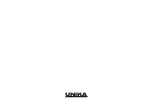
page 9
SHORT CIRCUIT PROTECTION -
The DSP-4000 amplifier comes with built-in Output Short Circuit Protects. The Output Short
Circuit Protection protects the output devices of the amplifier from short circuits and stressful loads. If your speaker lines shorted, the
amplifier automatically detects this problem and discontinued operation for that channel. If one side of your amplifier becomes shorted
and goes into protect mode, the other side will continue to operate normally. Channel output during the “Short Circuit Protection" will be
interrupted (i.e. no sound output). Short Circuit Protection can usually be traced back to the signal output line (i.e. speaker line). Check
the line from the output terminal of the amplifier to the speaker. If this line is good, check the internal speaker connections and
components. A short circuit will usually be traced to a bad cable or a bad speaker component and is rarely traced to the amplifier itself.
Introduction Front Panel Rear Panel Set Up Speakon Assembly Operating Modes
Features Specifications
Protection
THERMAL PROTECTION -
Dual 2-speed fans on the DSP-4000 amplifier provide adequate cooling. During low level output the fans run at normal speeds.
During high output and as heat raises, (exceeding 50°C.), the fans will run at higher speeds to aid the cooling process. If the heatsink temperature exceeds
91°C., the amplifier will mute until the amplifier cools down. When the amplifier cools below 90°C., the amplifier will return to normal operations. Be sure not to
operate your amplifier below the minimum load ratings to reduce the risk of overheating problems.
INPUT/OUTPUT PROTECTION -
The input circuits are isolated by resistors. An ultrasonic network uncouples RF from the output and helps to keep the
amplifier stable with reactive loads.
UNiKA
DSP-4000
PROTECTION
LIMITER -
The DSP-4000 amplifier comes with a built in limiter. When the input signal overloads, the “CLIP LED” indicates a signal overload, at this time, the volume
should be lowered to reduce distortion. If the input gain level is not reduced the built-in limiter will activate. During signal overload, the limiter will reduce the input audio
signal enough to minimize the amount of clipping. A limiter takes the gain of an overloading signal and reduces it, the reduction in gain reduces distortion that can cause
damage to your speakers and amplifier. During normal operation below clipping, and momentary clips on peaks, the limiter does not affect the audio signal and is
inaudible. It will allow brief clipping of peaks and will only activate when continuous hard clipping occurs. During excessive clipping the limiter will reduce the audio signal
enough to minimize the amount of clipping. When the input signal decreases enough that clipping ends, the limiter will deactivate and cease its gain reduction. The
limiter has a fixed threshold and can not be adjusted.
SAFE POWER LEVELS AT DIFFERENT OUTPUT LOADS:
8-Ohm Loads :
The amplifier can operate at its rated power level without risk of overheating. However, it may caused excessive temperature if it is pushed hard enough
to continually light the “CLIP” indicator, the amplifier’s average output power can reach its maximum peak.
4-Ohm Loads :
If the “CLIP” indicator flashes occasionally, the amplifier is approaching its Maximum long-term power capacity. If it is lit about half the time, the amplifier
channel will probably go into thermal protection within a few minutes.
2-Ohm Loads :
Except for an occasional flash, keep the “CLIP” indicator dark to avoid overheating the amplifier channel. Clipping should be kept to a reasonable
minimum. An amplifier’s peak current draw at full output power into 2 ohms is several times what the “normal ” draw is, but its various protection circuits will prevent this
condition lasting more than a minute or two.
Содержание DSP Series
Страница 14: ...Professional Power Amplifiers UNiKA ...
































